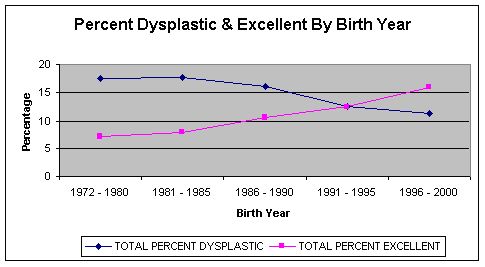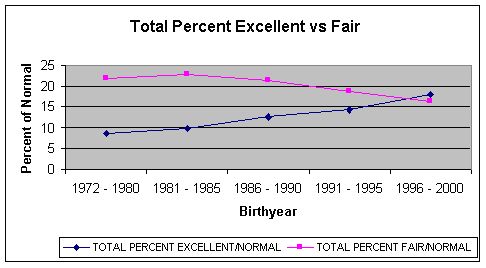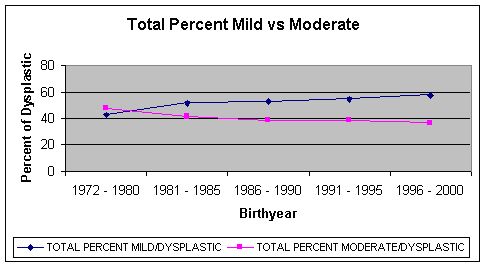Chief of Veterinary Services, Orthopedic Foundation for Animals, Inc.
Columbia, MO, USA
Breeders have an inherent responsibility to protect the comfort and well-being of the animals they produce, yet the dog and cat owning public spends hundreds of millions of dollars each year on diagnosis and treatment of genetic diseases. These factors justify placing continued emphasis on prevention of these diseases. Responsible breeders and the more progressive breed clubs are, and have been, responding to the challenge of improving the genetic health of our companions through better breeding practices.
The Orthopedic Foundation for Animals (OFA) is a private non-profit foundation which formed a voluntary dysplasia control database in 1966 with the following objectives:
 To collate and disseminate information concerning orthopedic and genetic diseases of animals.
To collate and disseminate information concerning orthopedic and genetic diseases of animals.
 To advise, encourage and establish control programs to lower the incidence of orthopedic and genetic diseases.
To advise, encourage and establish control programs to lower the incidence of orthopedic and genetic diseases.
 To encourage and finance research in orthopedic and genetic disease in animals.
To encourage and finance research in orthopedic and genetic disease in animals.
 To receive funds and make grants to carry out these objectives.
To receive funds and make grants to carry out these objectives.
The OFA's voluntary databases serve all breeds of dogs and cats and have the world's largest all-breed data bank on radiographic evaluations of the hip and elbow status. The testing methodology and the criteria for evaluating the test results for each database were independently established by veterinary scientists from the respective specialty area. These standards are accepted throughout the world and the results are used to evaluate prevalence and progress in controlling the respective diseases in the breeding population. The OFA serves as a central source of information for breeders and owners, based on the standards for evaluation, and as a major source of funding for studies directed at animal wellness.
Inherited traits, desirable or not, are controlled by the genetic makeup (genotype) of the individual dog or cat. The genotype is determined by the genes received from the parents, one-half from the sire and one-half from the dam. Most inherited traits in animals are polygenic. Some examples are: conformation, type, size, longevity, disease resistance, temperament, speed, milk and egg production, growth rate, maturation and sexual maturity rate and numerous inherited diseases.
Intuitively, it is recognized that these traits do not follow inheritance patterns based on simple Mendelian genetics. Polygenic traits, such as most characteristics that breeders are concerned with, are defined as those affected by multiple gene pairs. The problem is further magnified if each gene pair exerts a different degree of influence on a trait to produce an "additive" result. It is currently impossible to precisely predict the specific outcome of a particular mating with regard to polygenic traits and probabilities can only be generally estimated.
However, animal geneticists have developed successful breeding programs to improve milk production in cows, egg production in hens, speed in horses, growth rate in food animals, etc. They use basic genetic principles that have also been demonstrated effective in the dog.
The following breeding selection criteria have been demonstrated to more rapidly and effectively reduce the frequency of undesirable traits:
A. Breed only normal dogs to normal dogs--using hip dysplasia as an example, Table 1 illustrates the outcome of matings based on information extracted from the OFA database. A total of 152,589 progeny were identified where both parents had hip conformation ratings. The percentage of dysplastic progeny increased as the sire's and dam's phenotypic hip ratings decreased from excellent through dysplastic. Reed (2000) reported equal genetic contribution on progeny hip scores from the sire and dam.
Table 1. Mating Probability
Based on 152,589 Progeny in the OFA Hip Database With Known Sire & Dam Hip Scores
|
|
Excellent Dam |
Good Dam |
Fair Dam |
Dysplastic Dam |
|
Excellent Sire |
T=5835
N=5630
D=205(3.5%) |
T=17281
N=16291
D=990(5.7%) |
T=3146
N=2888
D=258(8.2%) |
T=595
N=528
D=67(11.3%) |
|
Good Sire |
T=16315
N=15481
D=834(5.1%) |
T=69041
N=63346
D=5695(8.2%) |
T=15475
N=13581
D=1894(12.2%) |
T=2941
N=2394
D=547(18.6%) |
|
Fair Sire |
T=1931
N=1782
D=149(7.7%) |
T=12008
N=10566
D=1442(12.0%) |
T=3957
N=3311
D=646(16.3%) |
T=935
N=698
D=237(25.3%) |
|
Dysplastic Sire |
T=362
N=308
D=54(14.9%) |
T=1826
N=1525
D=301(16.5%) |
T=632
N=456
D=176(27.8%) |
T=309
N=197
D=112(36.2%) |
T = total number of progeny per cell, N = number and percent of normal progeny and D = the number and percent dysplastic progeny.
B. Breed normal dogs that come from normal parents and grandparents--this employs the traditional horizontal pedigree with emphasis on the most immediate three generations (50% genetic contribution from each parent, 25% from each grandparent and 12.5% from each great grandparent)
C. Breed normal dogs that have more than 75% normal siblings--this information is usually not available since most animals in a litter become pets and are not screened for undesirable traits. Breeders can add incentives to purchase contracts in an attempt to gather this information, such as offering reimbursement for a preliminary hip radiograph taken when the pet dog is spayed/neutered.
D. Select a dog that has a record of producing a higher than breed average percentage of normal progeny--if known, the comparison of production performance between individuals is an important criterion. For example, a stud dog with a track record of producing 90% normal progeny is far superior to another dog producing only 50% normal progeny.
E. Choose replacement animals that exceed the breed average-exert constant, consistent pressure to ensure overall breed improvement.
Success in reducing inherited diseases in a breed depends first on breeders recognizing that a problem exists. This must then be followed by a commitment to solve the problem and dedication to consistent use of a standard evaluation protocol.
Hip dysplasia (HD) has been reported in all breeds of dogs and some cat breeds that have been evaluated by the OFA. Retrospective studies covering the period of 1972-2000 have demonstrated steady and encouraging progress as a result of the collaborative efforts of responsible breeders and the OFA. The OFA database population represents a specific subset of the general population of animals, primarily show dogs and cats, and working/hunting dogs. Accumulated data clearly illustrates the impact that the focused efforts of conscientious breeders can have on reducing the frequency of HD, and further indicates that the hip status of progeny follows that of parents.
The frequency of HD in most breeds has steadily declined. Concurrently, the percentage of animals with excellent hip conformation has steadily increased (Graph 1) in most breeds. Within the OFA population of animals with normal hip conformation, there has been a steady decrease in the percentage of fair and an increase in the percentage of excellent (Graph 2). Within the OFA population of dysplastic animals, there has been a steady increase in the percentage of mild with a corresponding decrease in the percentage of moderate dysplasia (Graph 3).
| Graph 1. | 
|
|
| |
General trends through the years of hip conformation phenotypes in dogs of all breeds evaluated by the OFA by year of birth. There has been a statistically significant improvement in % excellent hip conformation and decrease in % dysplastic for most breeds when comparing generation differences (dogs born in 1980's versus 1990's) using chi-square analysis. Improvements have resulted in excellent reports exceeding the number of dysplastic reports issued. This is a remarkable tribute to the efforts of the breeders and breed clubs.
| Graph 2. | 
|
|
| |
| Graph 3. | 
|
|
| |
While this may be surprising to some, it is also important to realize that some of the smaller sized breeds and mixed breeds have as high a percentage of HD as the larger breeds and purebreds (Rettenmaier, 2002). Generalizations that claim that dysplasia is limited to, or more common in, large dogs and pure breed dogs, are misleading.
HD appears to be perpetuated by breeder imposed breeding practices. However, when breeders and their breed clubs recognize HD or any other inherited disease as a problem and establish reduction as a priority, improvement within the breed can be accomplished without jeopardizing other desirable traits.
Although it is clear from the above graphs that breeders have made steady progress toward reducing the frequency of hip dysplasia, some are concerned that this decline may reach a plateau. As with any polygenic disease, it is anticipated that HD will decline in an exponential manner. In another population Leighton has shown that rapid progress can be expected in the first 3 or 4 generations, and is followed by slower but continued progress in subsequent generations. This is to be expected when phenotypic data is used to place selection pressure against polygenic disease traits with moderate to high heritability estimates. In the future, a DNA based genetic test might overcome this, but meanwhile breeders can continue to make significant progress by committing to careful selective breeding practices.
References
1. Reed AL, et al: Effect of Dam and Sire Qualitative Hip Conformation Scores on Progeny Hip Conformation. JAVMA, 2000; 217: 675-680.
2. Leighton EA: Genetics of Canine Hip Dysplasia. JAVMA, Vol. 210, No. 10, 1997, pp. 1474-1479.
3. Rettenmaier JL, Keller GG, et al: Prevalence of Canine Hip Dysplasia in a Veterinary Teaching Hospital Population. Vet. Rad. & Ultrasound, Vol. 43, No. 4, 2002, p. 313-318.